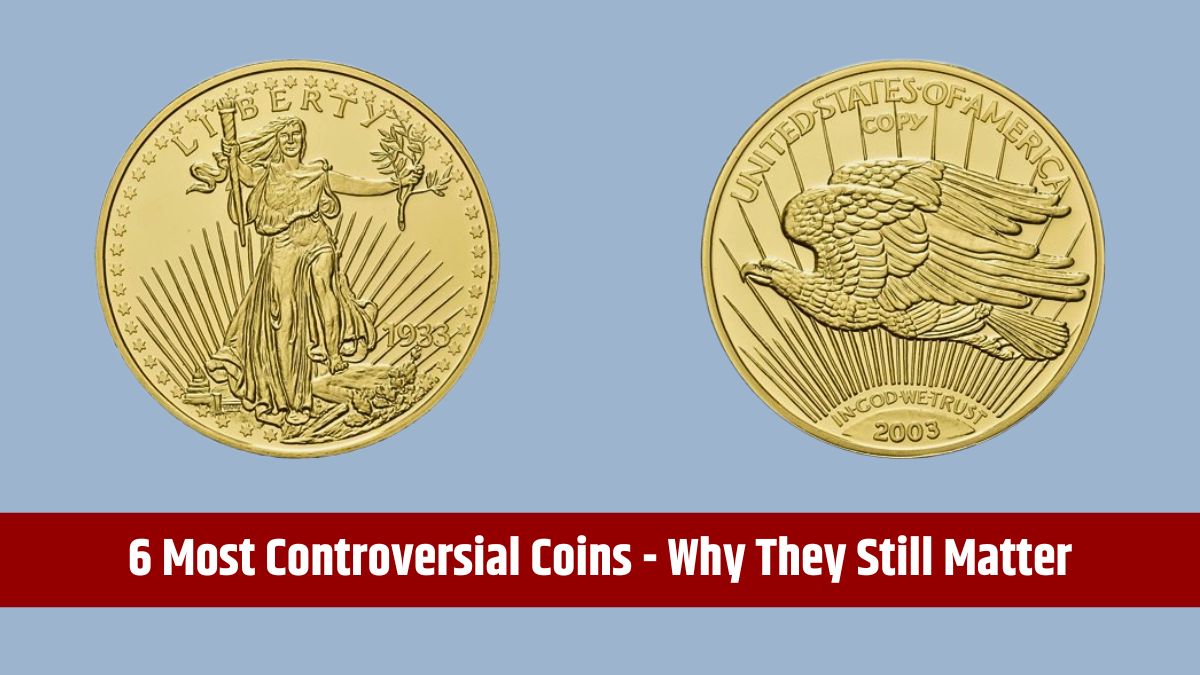Coins have always been more than just currency—they’re symbols of power, culture, and politics. However, some coins have sparked significant controversy due to their design, the circumstances of their issuance, or their historical consequences. Here’s a look at six of the most controversial coins in history and why they matter.
Table of Contents
1933 Saint-Gaudens Double Eagle
This gold coin, designed by Augustus Saint-Gaudens, was minted just as President Franklin D. Roosevelt removed the U.S. from the gold standard, making it illegal for citizens to own gold coins. Most were melted down, but a few were stolen from the U.S. Mint.
One such coin fetched over $7 million at auction in 2002, sparking legal battles. In 2011, the U.S. government ruled these coins illegal to own.
Why It Matters:
The 1933 Double Eagle symbolizes the tension between private ownership, government control of currency, and the black market. Its story also raises questions about the sanctity of currency and the impact of major economic policy shifts.
1913 Liberty Head Nickel
The 1913 Liberty Head Nickel was minted without authorization, as the design had been retired in favor of the Buffalo Nickel. Five unauthorized coins were struck by a Mint employee and discovered decades later.
One sold for $3.7 million in 2003, making it a legendary piece in U.S. numismatics.
Why It Matters:
This coin challenges the boundaries of minting authority and highlights the numismatic world’s obsession with rarity. It exemplifies how even unauthorized actions can create iconic collectibles.
Denarii of Caligula
Roman Emperor Caligula (37-41 AD) issued coins depicting himself as a god, with inscriptions like “Dominus et Deus” (Lord and God). This self-deification offended Roman citizens and became a symbol of his tyranny.
Some coins also depicted violent or corrupt imagery, earning the nickname “Killer Coins.”
Why It Matters:
These coins illustrate how rulers have historically used currency for propaganda, showcasing their power and ideologies. They remain a reminder of how symbols on coins can manipulate public opinion.
Nazi Reichsmark (1933–1945)
The Nazi Reichsmark featured swastikas and eagles, symbolizing the Nazi regime. While these coins were essential for the German economy during Adolf Hitler’s rule, they also served as tools for promoting Nazi ideology.
Today, these coins provoke debate among collectors, as many find the idea of owning them morally troubling.
Why It Matters:
The Nazi Reichsmark shows how currency can reinforce destructive ideologies. It highlights the tension between preserving history and ethical considerations in collecting controversial items.
1977 “No Mintmark” Lincoln Cent
A batch of Lincoln cents from 1977 was produced without the usual mintmark, sparking speculation about their rarity and value. While later deemed a production error, these coins became a collector’s fascination.
Why It Matters:
This incident underscores the role of minting errors in driving collector interest. It also highlights public fascination with even minor anomalies, turning them into symbols of rarity and intrigue.
1946 African American Commemorative Half Dollar
This coin, featuring Booker T. Washington, was intended to honor African Americans, particularly for their contributions during WWII. However, critics argued the coin oversimplified black history and failed to adequately represent the community.
Why It Matters:
This coin reveals the challenges of using currency to commemorate complex histories. It serves as a reminder of the need for inclusivity and depth in representing marginalized communities.
These controversial coins each tell a story of power, politics, and cultural shifts. While they may spark debate, they’re invaluable for the insights they provide into the societies that created them.
FAQs
Why is the 1933 Double Eagle illegal to own?
It was recalled when the U.S. left the gold standard, making it illegal.
What makes the 1913 Liberty Nickel unique?
It was unauthorized, with only five known to exist.
Why are Nazi Reichsmark coins controversial?
They symbolized and supported the Nazi regime, raising ethical concerns.
What was controversial about the Booker T. Washington coin?
Critics felt it oversimplified African American history.
What are ‘Killer Coins’ from Caligula’s era?
Roman coins portraying Caligula as a god, symbolizing his tyranny.






